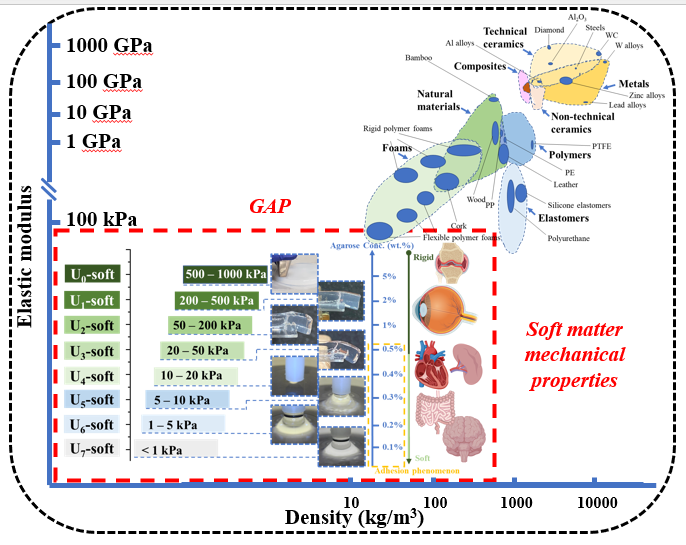Soft Materials property Map

The utility of Ashby’s map in systematically selecting materials for desired functionalities in conventional engineering disciplines is well-documented. Despite its effectiveness, Ashby’s selection charts exhibit a pronounced deficiency in their applicability to the domain of tissue engineering. This is primarily because they fail to account for the unique mechanical properties required of materials in this field, such as those with an elastic modulus below 100 kPa, characteristic of many soft biological tissues. To address this shortfall, we have developed a comprehensive database detailing the elastic modulus of soft engineering materials. This database bridges the mechanical property gap between traditional engineering materials and biological tissues, including cardiac, renal, hepatic, intestinal, cartilaginous, and neural tissues. The foundation of this database is the extensive data collection and experimental observations on agarose hydrogels formulated at ultra-low concentrations ranging from 0.01 to 0.5 wt.%. An investigative and analytical framework has also been formulated to assess the elastic modulus of exceedingly soft engineering materials rigorously.
This framework is crucial in refining the mechanical properties of agarose hydrogels to align with those of biological tissues. Consequently, we have not only established a mechanical continuum between soft materials and tissue engineering, but we have also introduced a novel scale for quantifying softness. This scale is imperative for synthesizing implantable bio-scaffolds that are custom-tailored for tissue engineering applications, thereby advancing the field of regenerative medicine.
